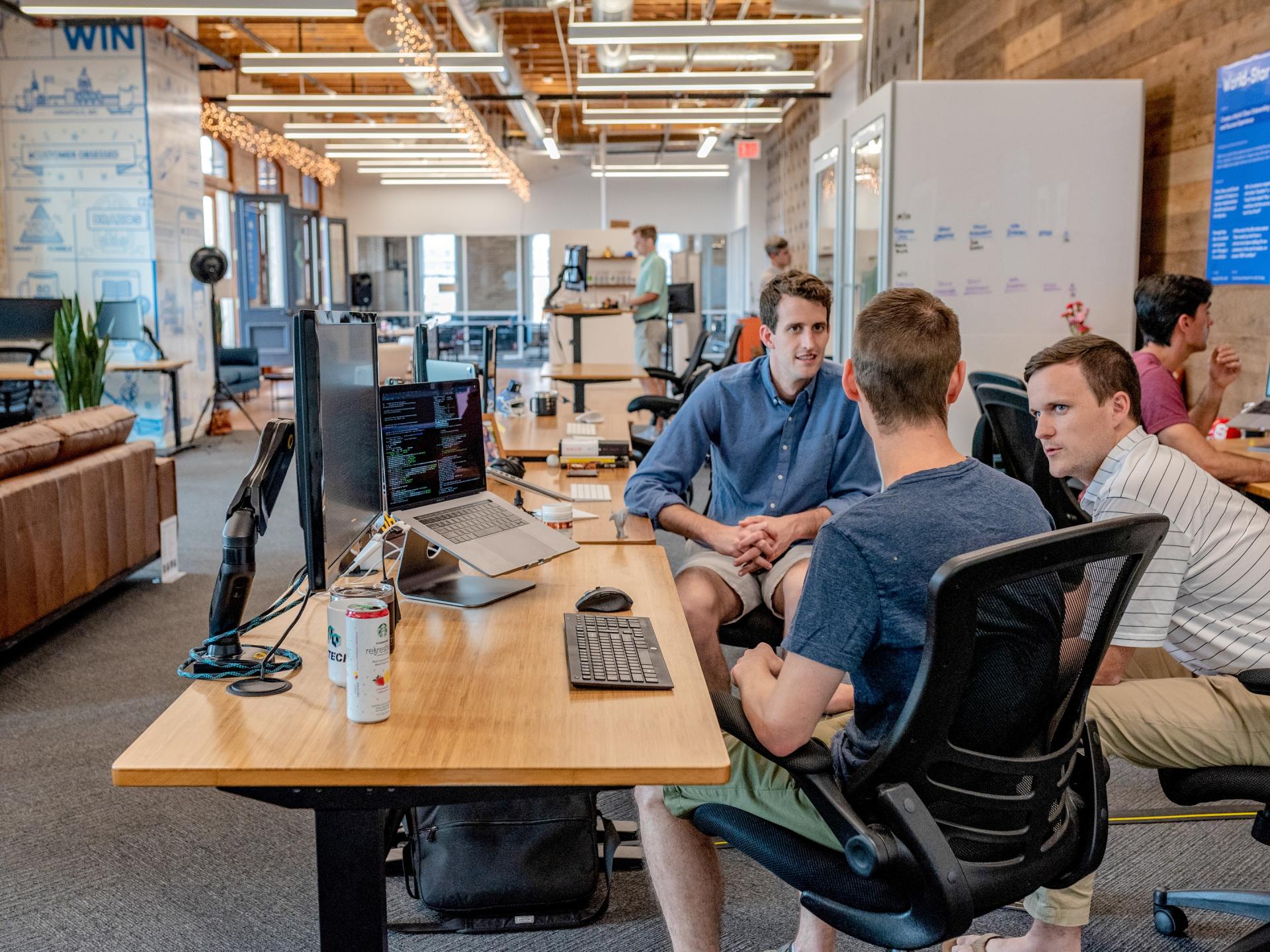The agile mindset: rewiring the CIO for the 2020s
Why the last three months' upheaval is nothing compared to what's ahead

Agile. It’s been the buzzword of the last three years. There’s nothing that hasn’t been said about the possibilities for agile development in our world. Yeah, agile has merit; and we get it.
But it’s a limited concept of agility. Agility that is simply confined to development is nothing like what CIOs will need for the next decade. In the 2020s, it won’t be about dabbling in a bit of agile software development: it will be an all-consuming obligation to be agile in everything we do.
Here’s what I mean:
Covid-19 has meant that we’ve all just experienced what were probably the “most agile” three months of the last decade. We’ve been given innovation space and seen our organisations experience rapid change. For a few days last March, all bets were off and many of us had the opportunity to pluck a new operating model out of thin air.
But that was nothing, decade-wise. Whatever nimble innovation we’ve achieved in the last few months amounts only to the first few steps for the 2020s. It demonstrates just a fraction of the dexterity and open-mindedness the decade will demand of CIOs.
I believe that this decade will be the era of the “agile mindset”. In the next few years we will face the long tail of a pandemic; a sharp global recession; increasingly cagey worldwide trading relationships; above-board and underhand applications of vast datasets; criminal state and commercial security attacks; and technological innovation exploding in all directions. In this environment, the successful CIO is going to need the skills and brass-neck confidence to quickly read the runes; think creatively every time; and take rapid action.
So what’s an agile mindset? And why is “agile” a positive concept and different from “scatterbrain”, “bandwagon-jumping”, or “rainbow chasing”?
I would define the agile mindset that CIOs need as one that has no fear of innovation – even on a large scale, with risk and/or at high speed. It is a mindset confident to make changes because the basis for the change is rooted in intelligent analysis and well-considered weighing of alternative solutions. And the agile mindset means the CIO is able to take decisions on innovation quickly because she has had her eye on the wider horizon in the preceding months and years. She saw this coming.
Rapid response on a grand scale is not always what IT has been famous for. Therefore, if we are rewired, we might surprise and unnerve our colleagues. So it’s going to be essential we avoid accusations of fad-following headless chickenery or mid-life crisis. Consequently, our agile mindset will need to be grounded in, and supported by, five principles. I would say these are:
1. Face outwards
I’ve banged on many times about how the role of IT in the past was head down, keeping the machinery running, while the big decisions were taken by other people. That era is over, and probably ended in March 2020 (see above). We can no longer operate by considering only our own teams or organisations – meerkat-like we need to sit up and look around.
We need to listen and observe to get the fuller picture so we are ready to respond nimbly. That means time spent on listening, observing and taking the time to truly understand the ideas and concerns of C-Suite colleagues. It means observing the actions of competitors, not just leaving that to Marketing or Sales. But perhaps most of all it involves paying close attention to the customer….
2. The customer is always moving
We all know why Zoom meetings went from 10m last December to 300m in April. We may also have noticed in the press that more than half of UK pensioners shopped online for the first time during the pandemic. Those are just two examples of how Covid-19 imposed huge and un-forecasted changes on customer behaviour. But its effect is bigger than that. It taught customers of all kinds that: a) there are good and useful ideas out there that they haven’t yet tried; b) changing the way you interact with a brand is often very easy; c) a new way of interacting can become available very quickly.
Customers will continue to be moving. Their expectations will change, as will their appetite for new and niftier solutions.
This is not something that only Marketing should monitor. The CIO in the 2020s needs an open mind and a keen eye on how customers are behaving. But developing access to customer information and observation needs to be in collaboration with the traditional customer-facing functions – this is not the time for muscling-in, treading on toes or knowing better.
3. Quick response is always possible
We all proved in March that a quick response is possible. There was no choice. I’d argue that it’s always possible, and that availability of choice has nothing to do with it.
I’ve just finalised deployment on the Upfield separation from Unilever – the fastest and largest ever separation in the food industry – completed in 22 months. We accommodated 14 manufacturing plants and lord-knows-how-many offices on all continents, in three phases. “Quick” doesn’t even begin to do it justice.
But we made it, and that was due to (hard work and) taking one significant decision: to use out-of-the-box solutions, with little to no customisation, adaptation or personalisation. Changing the organisation’s processes to adapt to the technology permits rapid and customer-focused change to occur. It can be done.
However, making very rapid changes – especially those affecting people and processes - has one essential sister-principle: you must win hearts and minds. Which means….
4. Bring others along on the trip
We have all noticed over the years that people within the organisation tend not to do things simply because we tell them to. Instead, they have to be persuaded.
Therefore, I’m saying that a key mindset and skillset for the CIO of the 2020s is the ability to persuade, influence and communicate. CIOs will need to prove the argument for their innovation logically and with evidence, as has always been case. But they will also need to be able to influence C-Suite colleagues with persuasive arguments, as well as having the background-radiation of credibility as an outward looking, market-responsive thinker.
Then, they will need to be able to make the case for change to everyone else in the organisation - the people whose roles and processes will change. That will need to be framed to include both logical arguments and understanding of the benefits and results that will help people sample and then adopt the changes.
Crucially, in the coming years, the CIO will need to understand that all endless chatter that underpins persuading and influencing is in fact, Real Work. And work that will consume a great deal of their working week.
5. Anything might happen (but it probably won’t)
Finally, the CIO will need to abide by the principle that anything might happen. After all, it just did.
Experiencing the major upheaval of a pandemic could easily make everyone nervous and hyper-alert to all the meteor-strikes that might happen. However, I am not suggesting setting up A War-Room of Possibilities. Instead, I think we will need a rolling headline plan for what we will do if outlying situations occur, but we should primarily concentrate on having responses up our sleeves for the more likely probabilities. We need one foot in the future – but the likely future.
And of course, we will need, as ever, to keep abreast of technology innovations. However, we should not reduce the CIO’s role into the Librarian of New Advances. Primarily, we need to focus on selecting customer-responsive business innovations and then hire a technology expert to help us cherry-pick the right kit to deliver.
We’ve experienced significant upheaval in the last few months – but it’s nothing compared to what’s coming in the rest of the decade. The 2020s will be a mighty but potentially very satisfying challenge for CIOs. I believe that if we rewire our approach to be more agile and more tuned-in we will rise to the challenge and finally attract the respect that IT’s contribution deserves.









